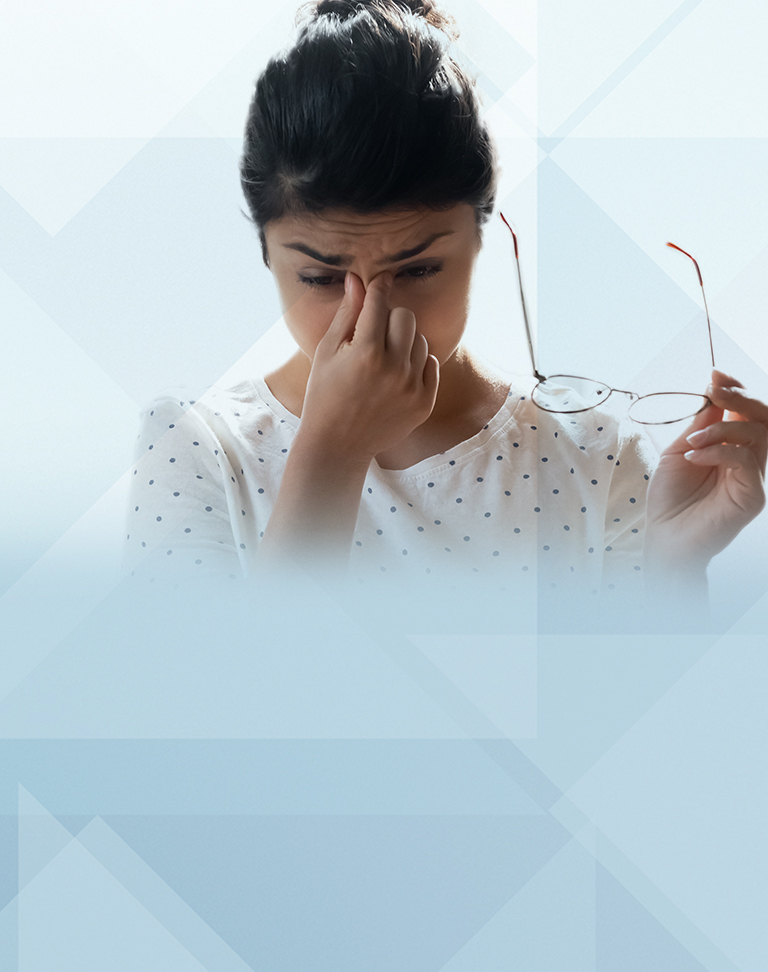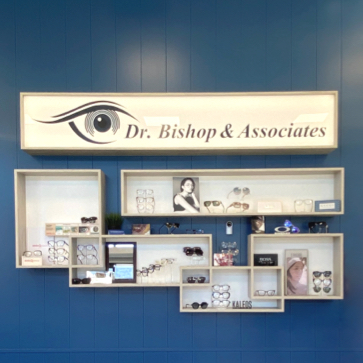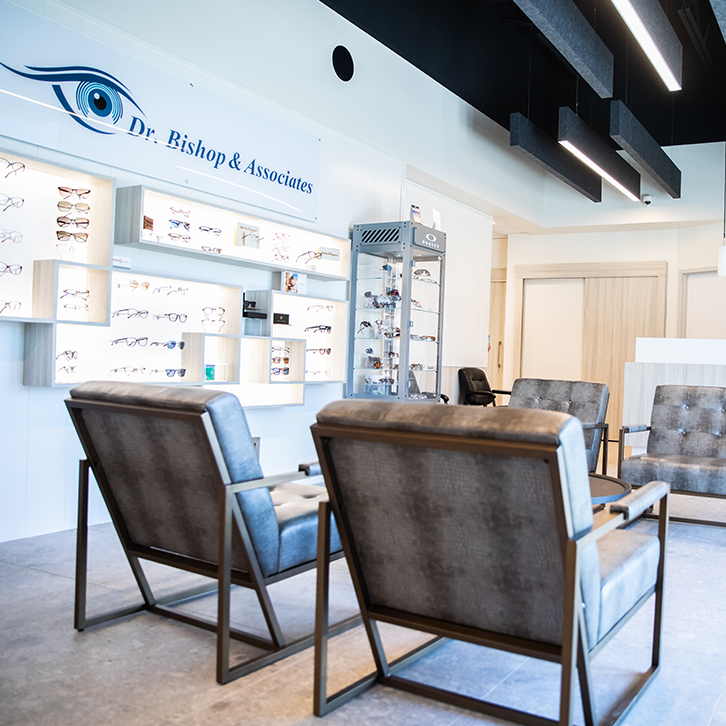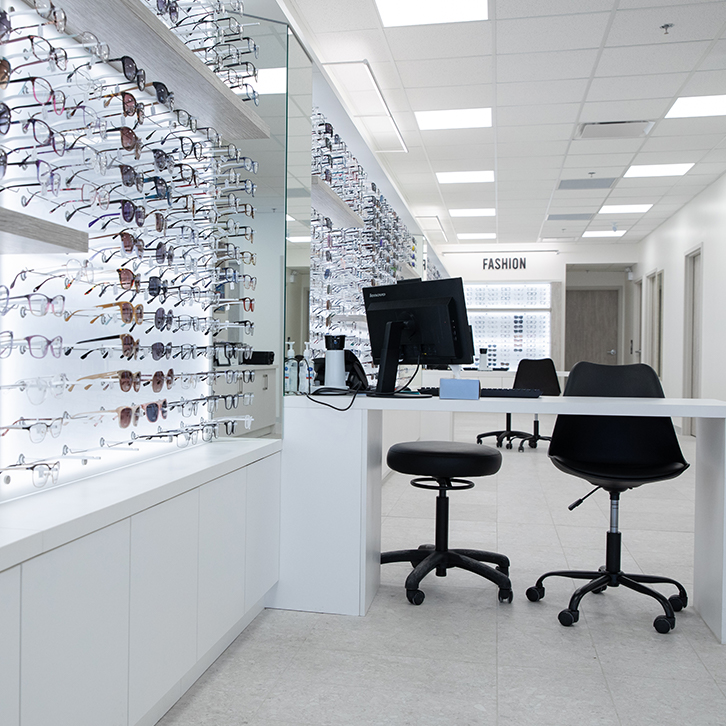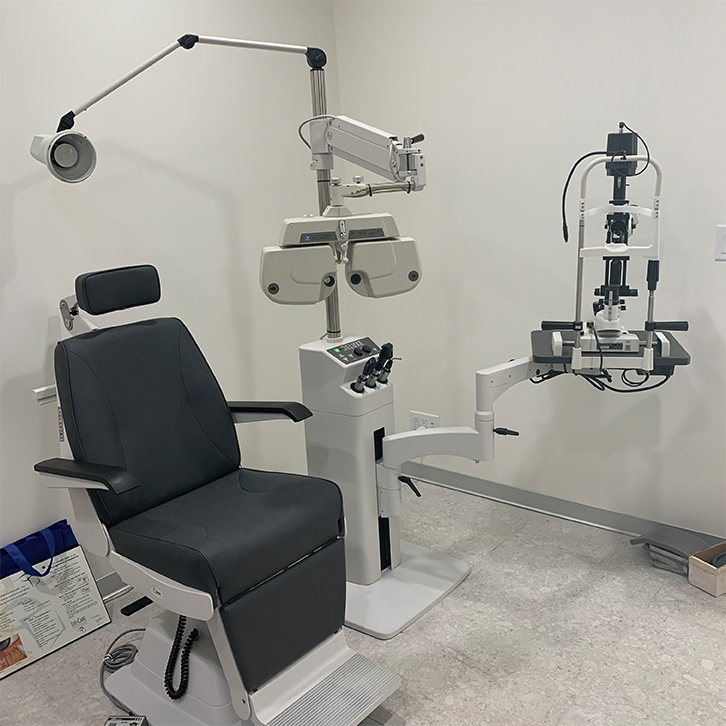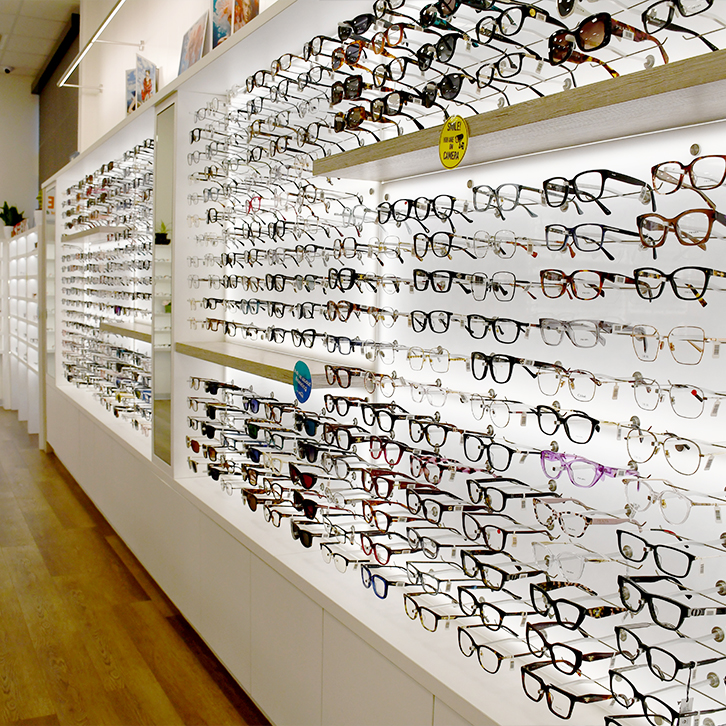Managing Digital Eye Strain
Digital eye strain, also known as computer vision syndrome, occurs when prolonged screen use overworks your visual system. Constantly focusing on screens can lead to eye fatigue, discomfort, and worsening uncorrected vision issues.
Protecting your eyes doesn’t mean giving up screen time entirely. By adopting healthy habits and seeking experienced care from our Optometrists, you can effectively reduce the symptoms of digital eye strain and maintain better visual health.
If you’re battling the symptoms of digital eye strain, contact Dr. Bishop & Associates to schedule an appointment and get relief.

Symptoms of Digital Eye Strain
Common symptoms of digital eye strain include:
- Fatigue
- Dry eyes
- Blurred vision
- Double vision
- Watery eyes
- Headaches
- Light sensitivity
- Burning or irritation
- Neck, shoulder, or back pain
If you notice additional symptoms after long periods of screen time, it may be related to digital eye strain or a separate eye condition. Visit us to get to the bottom of your symptoms.
Preventing Eye Disease in a Digital World
Digital eye strain isn’t just an annoyance—it can increase your risk of developing chronic eye conditions. Continuous exposure to blue light can contribute not only to sleep cycle disruption but also to retinal damage and oxidative stress, which may accelerate macular degeneration.
Proactive care is essential to maintaining your eye and general health. To reduce screen-related risks, we suggest routine eye exams, lens coatings for your glasses, and specialty contact lenses.
Exposure to blue light—particularly in the evening—interferes with melatonin production. When you’re up working late or scrolling on your phone, you may find it harder to fall asleep, or your overall quality of sleep has been reduced.
Blue-light lens coatings on your glasses can block harmful wavelengths while maintaining clarity and colour balance. You’ll be able to work without disrupting your body’s natural sleep rhythm. These lenses are ideal for patients who use screens late into the evening.
Anti-fatigue lenses are designed to reduce the eye strain caused by prolonged screen use. They feature a mild boost in power at the bottom of the lens, which supports your eyes as they shift focus between near and intermediate distances.
This helps reduce symptoms of digital eye strain, such as tiredness and blurry vision while promoting more comfortable viewing.
Driving at night, in challenging weather, or directly into the sun can lead to visual discomfort due to overly bright lights. Specialized driving lenses, such as DriveSafe and Intelligence, can reduce glare, enhance contrast, and improve visibility in low-light conditions.
These lenses adapt seamlessly to changing light levels, offering greater transparency in dim environments while still effectively blocking glaring halogen lights or harsh sunlight. They aren’t just for driving–they’re also great for outdoor activities and everyday wear.
Acuvue OASYS MAX are 1-day, disposable contact lenses designed to protect your eyes from blue light. Our blink rate reduces significantly when looking at screens, which can cause dryness, irritation, and discomfort.
These contact lenses filter blue light, offer UV protection, and reduce glare. They also help maintain optimal moisture levels, making them a great option when using screens for an extended period of time.
Treating Digital Eye Strain
Many of us spend long hours in front of screens, whether for work, entertainment, or communication. Unfortunately, extended screen time can lead to digital eye strain, which can cause symptoms like dry eyes, headaches, and blurred vision.
The good news is that relieving these symptoms is possible through a combination of simple lifestyle changes and professional treatment. Here are a few practical tips to help reduce the discomfort associated with digital eye strain.
Blinking habits differ when looking at digital devices. The average person normally blinks 12 times per minute, but that reduces to 5 times per minute when viewing a screen.
Have you ever tried keeping your eyes open for a really long time? The same discomfort can occur when we don’t blink enough while using a computer.
If you catch yourself staring without blinking, try blinking a few times to rest your eyes and encourage tear production.
Eye drops are the most common treatment option for dry eyes caused by digital eye strain. While there are plenty of over-the-counter artificial tears, you should consult our optometrists first. Book an appointment to discuss the best eye drops for your eyes.
Sitting too close to your screen can irritate your vision. Whether it’s your TV screen or your workstation, take a step back, and you might notice reduced symptoms.
For computer screens, it’s best to sit back at least an arm’s length away with the screen positioned 15 degrees below eye level.
However, different devices, visual abilities, and desk setups can require personalized guidelines. If you’re unsure if screen distance impacts your eye health, talk to our optometrists.
Try the 20-20-20 Rule
The 20-20-20 rule is an easy-to-remember guideline to improve your relationship with screen time. This rule can help reduce digital eye strain: every 20 minutes, look at an object 20 feet away for a minimum of 20 seconds.
If you’re unsure what 20 feet looks like, it’s about half the height of a telephone pole or one-and-a-half Volkswagen Beetles. If you don’t have these nearby, focus on something across the room or outside.
We understand that “every 20 minutes” can be unrealistic. When possible, set a timer or take breaks every hour to give your eyes a rest. If you’re unsure about timing, track your symptoms and consult Dr. Bishop & Associates for personalized advice on managing screen time.

Visit Us to Manage Digital Eye Strain
Digital eye strain can be bothersome, but there are effective ways to manage the symptoms and reduce your risk. Our Optometrists can evaluate your eye health during an eye exam to identify the cause of your discomfort.
Whether you need an updated prescription, advice on screen breaks, or treatment for dry eyes, we’re here to help. Contact Dr. Bishop & Associates today to schedule your appointment.
Why Trust Us? We’re Advocates for Eye Health & Vision Needs
Dr. Bishop & Associates is committed to providing care that can make a positive difference in your life.

Dry Eye Clinic
Dealing with scratchy, red, tired eyes can be frustrating—but we’re here to help. At our dry eye clinic, we take a comprehensive approach to diagnosing and managing dry eye, focusing on your unique symptoms and lifestyle. We aim to address the root cause to achieve long-lasting relief, including innovative treatments with noninvasive IPL and radiofrequency technology.

BEAUTIFY @ Dr. Bishop’s
We want you to feel confident in your skin. Our aesthetic services are designed to help renew and replenish your skin with minimally invasive treatments and no downtime. With AlumierMD skincare and IPL, radiofrequency, and laser rejuvenation technology, we’ll work with you to create a personalized plan to address your skin concerns and reveal your natural beauty.

Myopia Management
Nearsightedness (myopia) is on the rise, and it can have long-lasting impacts on your child, from their success in the classroom to their eye health later in life. Myopia management is a personalized, proactive approach to slowing myopia progression to help support your child’s sight today and protect their long-term eye health. Your child’s vision is our top priority.

Where to find us
Willow Park Village
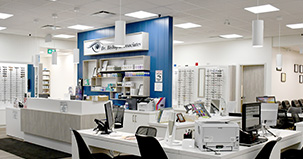
Our Address
- 575 – 10816 Macleod Trail SE
- Calgary, AB T2J 5N8
Contact Information
- Phone: (403) 974-3937
- Fax: 403-509-4859
Our Hours
Legacy Township
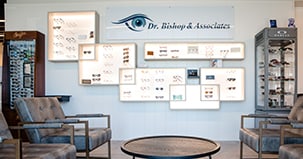
Our Address
- 230 – 200 Hartell Way SE
- Calgary, AB T2X 4S9
Contact Information
- Phone: (403) 974-3937
- Fax: 587-392-7365
Our Hours
Beacon Hill
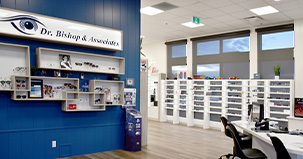
Our Address
- 615 – 11877 Sarcee Trail NW
- Calgary, AB T3R 1W5
Contact Information
- Phone: (403) 974-3937
- Fax: 403-509-4854
Our Hours
Northgate Village

Our Address
- 103 – 495 36 St NE
- Calgary, AB T2A 6K3
Contact Information
- Phone: (403) 974-3937
- Fax: 403-509-4866
Our Hours
Our Eyewear Brands

- Ray Ban
- Tom Ford
- Zeiss
- Kate Spade
- Oakley
- Gucci
- Maui Jim
- Fossil
- Saint Laurent
- Calvin Klein
- David Beckham
- L.A.M.B.
- Fossil
- Ray Ban
- Tom Ford
- Zeiss
- Kate Spade
- Oakley
- Gucci
- Maui Jim
- Saint Laurent
- Calvin Klein
- David Beckham
- L.A.M.B.

Virtual Try-On: Effortlessly Sample Your New Look
Ready to find your perfect pair? Try on our wide range of glasses and sunglasses virtually!
Explore styles available at all our Calgary eye clinic locations.
Dr. Bishop & Associates is here to help you see the world in style.
